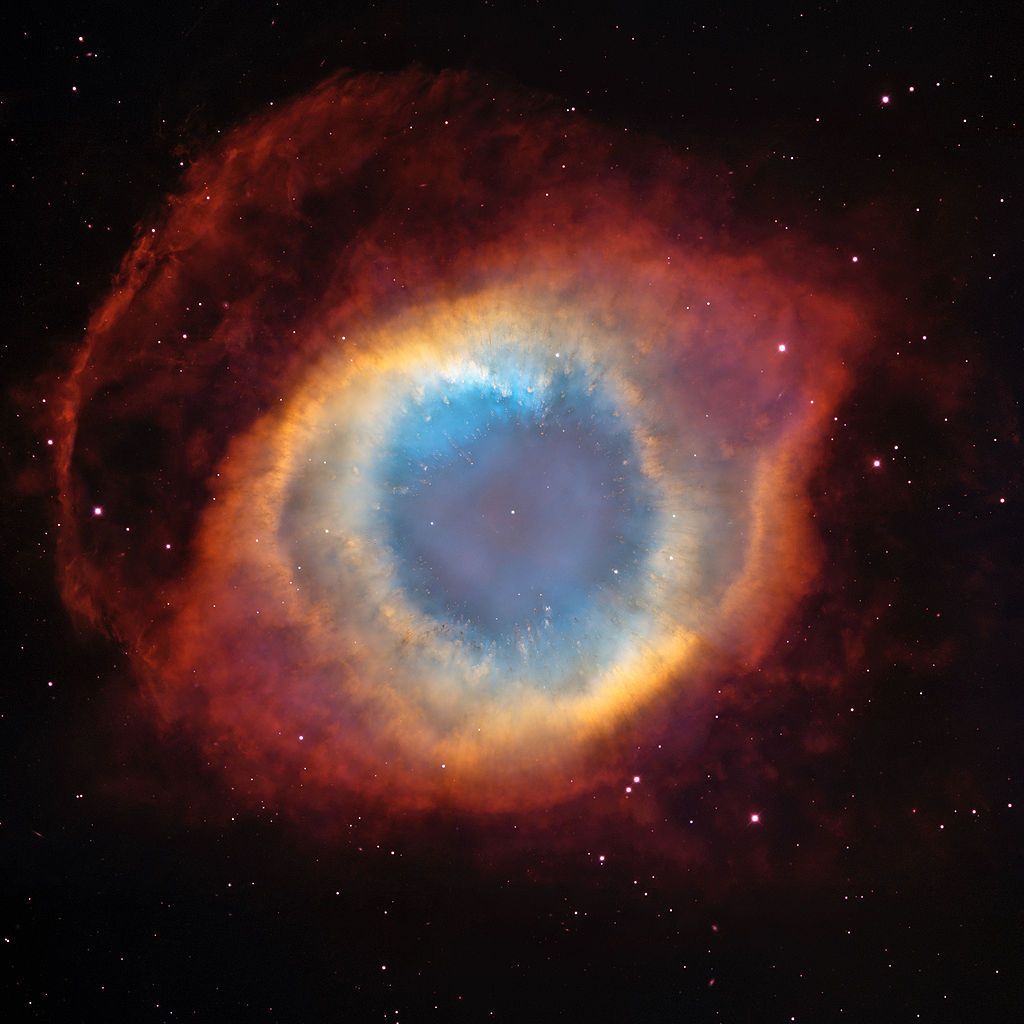Post by Gregg1956 on Nov 5, 2015 2:06:51 GMT

Public Domain Image
About a year ago I attempted to view this nebula from my backyard with my big telescope, an 8" newtonian reflector. I could not see it due to the light pollution along my southern horizon. I tried several times. No dice.
At that time, in early December 2014, I bought a new smaller telescope: a 90mm refractor. Why would I want a smaller telescope you ask? Because I needed a "grab and go" scope that I could put away quickly. I'm on call 6 nights a week, and it seemed that every time I set up my big one I'd get called out and have to leave quickly. I love the 90mm and use it a lot.
So... just a few days after attempting (and failing) to observe the Helix Nebula with my 8" scope, I had a night off and took my (then) new 90mm refractor to Sky's The Limit Observatory, which is less than a ten minute drive from my house. But here's the thing: there is a huge difference in the night sky. The STL campus is just outside the city limits and all of that muck I was trying to peer through had disappeared.
The first thing I did was point my 90mm at the constellation Aquarius and star hopped to the location of the Helix Nebula. Yeah! Success! I could see it quite clearly. That was my first time observing that particular PN. I love PN's!
Let me tell you a little about the "power" of telescopes. It's all about aperture. The larger the aperture, the more the light gathering power. For example; my 8", or 203mm telescope gathers just over 5 times as much light as my 90mm. And my 90mm gathers 65% more light than my old 70mm telescope. (That's an appreciable difference. I can see galaxies from my backyard with my 90 that I can't see with my 70.)
The light pollution from my yard isn't nearly as bad as it is in big cities, but a short drive out of town makes all the difference in the universe.
Designated as NGC 7293 in the New General Catalog and aka The Eye of God, the Helix Nebula is a planetary nebula about 700 light years away, making it one of the closest PN's to our planet.
About a year ago I attempted to view this nebula from my backyard with my big telescope, an 8" newtonian reflector. I could not see it due to the light pollution along my southern horizon. I tried several times. No dice.
At that time, in early December 2014, I bought a new smaller telescope: a 90mm refractor. Why would I want a smaller telescope you ask? Because I needed a "grab and go" scope that I could put away quickly. I'm on call 6 nights a week, and it seemed that every time I set up my big one I'd get called out and have to leave quickly. I love the 90mm and use it a lot.
So... just a few days after attempting (and failing) to observe the Helix Nebula with my 8" scope, I had a night off and took my (then) new 90mm refractor to Sky's The Limit Observatory, which is less than a ten minute drive from my house. But here's the thing: there is a huge difference in the night sky. The STL campus is just outside the city limits and all of that muck I was trying to peer through had disappeared.
The first thing I did was point my 90mm at the constellation Aquarius and star hopped to the location of the Helix Nebula. Yeah! Success! I could see it quite clearly. That was my first time observing that particular PN. I love PN's!
Let me tell you a little about the "power" of telescopes. It's all about aperture. The larger the aperture, the more the light gathering power. For example; my 8", or 203mm telescope gathers just over 5 times as much light as my 90mm. And my 90mm gathers 65% more light than my old 70mm telescope. (That's an appreciable difference. I can see galaxies from my backyard with my 90 that I can't see with my 70.)
The light pollution from my yard isn't nearly as bad as it is in big cities, but a short drive out of town makes all the difference in the universe.
